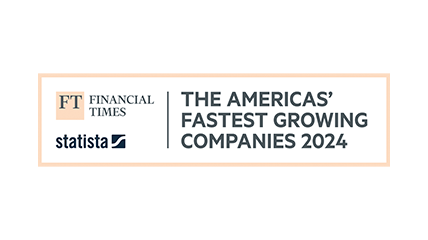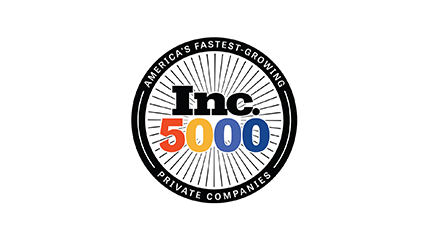Blog /
Advanced Mobile Location Data Proves Valuable for Retailers

Knowing the past and present location of a customer or prospect has long been regarded as one of the most important advantages of mobile location data. And, savvy marketers are beginning to take notice.
Enhanced Mobile Location Data Targeting Tools
Who we are as consumers can often be based on where we are. Not just at this moment, but at moments in the past. And, mobile, and only mobile, gives marketers the uncanny ability to target its best customers based on mobile location data. By using third party mobile location data, and device detection, marketers can target their best customers and prospects that are most likely to buy now.
Let’s take a deeper dive into the full extent of what mobile location data can do for your business. Here are some of the tactics we use at Purplegator in helping to maximize your dollars using various programmatic mobile marketing strategies.
Geo-Targeting
Most mobile advertising campaigns start with geo-targeting. With geo-targeting, a retail business identifies its immediate trading area. For a restaurant, that trading area is normally limited to just two or three zip codes. For a specialty retailer, it’s often a much greater radius from the store location.
Consumers have varying appetites as to how far they will travel to visit a retail location. This is primarily based on whether the store location is urban, suburban, or rural. Take the big box stores such as Lowe’s and Home Depot, for example. Rural consumers that visit big box stores account for a whopping 30% of all visits. Country folk are also more willing to travel longer distances to shop with more than half of this market segment willing to travel 10-25 miles to visit a big box store retailer. Not so with suburban residents. By contrast, 60% of suburbanites won’t venture greater than five miles to visit a big box store. (Source – Mobile Marketing Association)
This data suggests that geo-targeting is not a one distance fits all factor. No matter how terrific your store is, suburban consumers are unlikely to drive by several competitors just to get to your location. Rural consumers may have no other choice, but to drive a long distance to find you.
GEO-FENCING
Think of geo-fencing as a smaller sub-set of your overall geo-targeting area. This may be a geo-fence of an entire zip code where its wealthy household incomes make its residents more likely to purchase your high-end kitchens. It could be a geo-fence of a large construction project on the south side of town where many professional architects, builders, construction workers, painters, or floor covering employees are working now.
GEOCONQUESTING
Geoconquesting with mobile location data has been around for a while now. (In fact, we made a video about it several years ago.) Geoconquesting involves the ability to use device detection to target consumers that have visited a specific location down to the address level. Many of our suppliers say that it is the exact geographic address, while others suggest it’s an address location plus about 70 meters. That said, technology is constantly improving in this area and the most important thing for us is to help define the best vendors to work with for your specific situation.
So, how should you use geoconquesting? The obvious way is to target devices that have visited a competing store. But, it shouldn’t just end there. You can also target key influencers such as your suppliers who might be in a position to recommend a retailer. Geoconquesting a professional trade show, such as your local home show, is another great way to find those consumers that are most likely to be in the market to purchase your products and services regularly–and often be in the market to make a purchase now.
GEO-COMMUTING
It’s not just about where we live and where we work, but the route that we take to get between the two places where we spend most of our time. Ask Alexa in the morning and she’ll tell you the best route to your work place. At the end of the day, your iPhone, or the WAZE app, will send you the most advantageous route home. But, since we all normally leave for work and return home at about the same time, we’ll usually be commuting along the same route most days.
The average commute time for Americans who drive to work is 26 minutes, ranging from a high of 31 minutes in Maryland to a low of 16 minutes in South Dakota. Geo-commuting aims to take advantage of that geography between our homes and our places of employment. It’s just another great way that mobile location data can target a consumer who drives by, or near, your retail location on the way home. If the consumer drives 30 miles each way, your retail location that is 15 miles away from both is likely to be targeted via traditional geo-targeting. But, if he’s driving by your location during his commute, he is a prospect for your store regardless of it not being in the immediate trading area for your business.
With geo-commuting, you can enter into a consumer’s life at just at the right, and most convenient, moment. On his or her way home from work.
GEO-COOKIES
Most of us are presented with online cookies every day at work and at home. Consumers visit a particular website and are then “cookied,” often for retargeting programs later. That’s why if you visited a website and looked at a pair of shoes, doesn’t it seem like those same darn shoes are following you from ESPN’s app to The Weather Channel’s desktop forecast.
Geo-cookies are similar, except they are based on visiting a specific location, not to the visit of a particular website. By using geo-cookies, you can retarget consumers based on a history of past and present visits to physical locations. One of our vendors promises that it can even go back in time and find those consumer devices that have visited a specific location as far back as six months ago!
GEO-INTERESTS
Geo-interest targeting is more about specific interests and purchase intent. For example, if you know that your best DIY customers have a keen interest in football, you could target the NFL stadium in your area and target those consumers who are season ticket holders, hawking beer inside the stadium, or just tailgating in the parking lots.
Facebook has been providing interest targeting based on user data and input for many years. Much of it is very accurate, but certainly not all of it is. That’s why geo-interest targeting is a great advantage to effectively enhance the targeting your mobile advertising audience.
APP DOWNLOADS
Ever wonder why there’s a flashlight app in the App Store? There’s no charge to download it and it doesn’t have any advertising within it. So, why would somebody go to the trouble of creating a flashlight app?
Data is the reason why. When you downloaded the flashlight app, of course you read all the terms and conditions, right? Well, if you were the one person that did, you’d understand that the reason flashlight apps exist in the first place is to determine what other apps you have on your mobile phone! And, then market that information. The 80+ apps you have on your smartphone say a lot about you and who you are. Gain insight to targeting the best prospects for your business by targeting consumers that have particular apps on their devices. That’s marketing gold.
TRADITIONAL DEMOGRAPHICS
Mobile and desktop advertising offers the same traditional demographics that traditional media has promoted for decades, only better. While a rock station may predominantly target that valuable male demo, with mobile we know so much about the target audience that we can almost guarantee that the only consumers we will reach are men. There’s no guess work involved. And, therefore, NO WASTE!
MAKING IT WORK FOR YOU
We often hear about how easy it is for advertisers today to operate their own mobile and desktop advertising programs. And, without a doubt, Google and Facebook properties have made it extremely easy and convenient to do so. Faced with stagnant growth, even the local cable company and radio reps are hoping to stem their inevitable advertising decline by selling digital advertising today.
While traditional geo-fencing continues to have lots of value, by considering the other mobile location data options provided in this article, you can greatly enhance the store traffic and inquiries to your retail location. It’s time to expand on the geo-location options you’ve worked with in the past and answer deeper questions about what enhanced mobile location data can do for your retail store.

LOCATION, LOCATION, LOCATION: Certainly, location data is a big part of the internet’s projected advertising growth.
About the Author
Bob Bentz is president of mobile-first agency Purplegator. He is also the author of RELEVANCE RAISES RESPONSE: How to Engage and Acquire with Mobile Marketing and an adjunct at the University of Denver where he teaches the graduate level course in mobile marketing.









